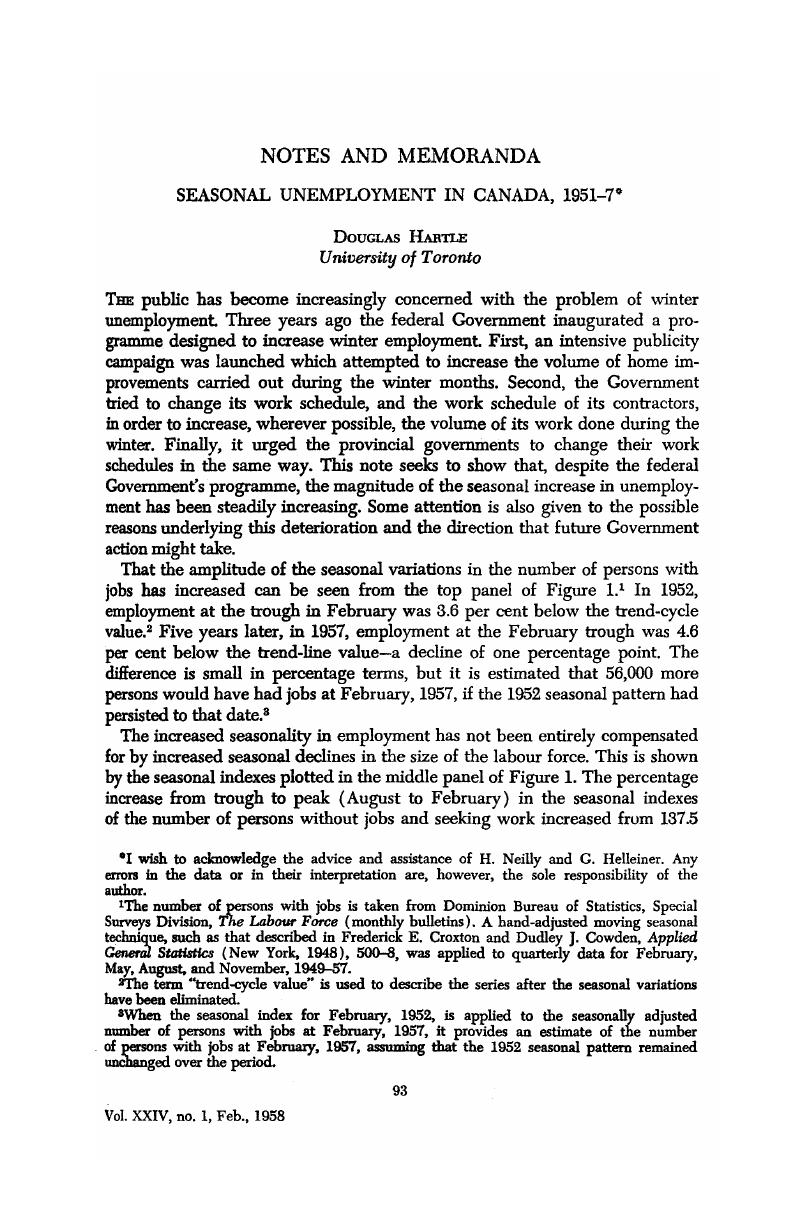No CrossRef data available.
Published online by Cambridge University Press: 07 November 2014

I wish to acknowledge the advice and assistance of H. Neilly and G. Helleiner. Any errors in the data or in their interpretation are, however, the sole responsibility of the author.
1 The number of persons with jobs is taken from Dominion Bureau of Statistics, Special Surveys Division, The Labour Force (monthly bulletins). A hand-adjusted moving seasonal technique, such as that described in Croxton, Frederick E. and Cowden, Dudley J., Applied General Statistics (New York, 1948), 500–8Google Scholar, was applied to quarterly data for February, May, August, and November, 1949–57.
2 The term “trend-cycle value” is used to describe the series after the seasonal variations have been eliminated.
3 When the seasonal index for February, 1952, is applied to the seasonally adjusted number of persons with jobs at February, 1957, it provides an estimate of the number of persons with jobs at February, 1957, assuming that the 1952 seasonal pattern remained unchanged over the period.
4 The number of persons without jobs and seeking work is taken from D.B.S., The Labour Force (monthly bulletins), seasonally adjusted by Univac Method II from monthly data 1953–7. For the years 1949–52, monthly data were interpolated from quarterly data. To maintain consistency with the other data, seasonal peaks and troughs are assumed to fall on February and August, respectively. In fact, the seasonal peak occurred in either February or March and the trough consistently appeared in September. This assumption does not significantly alter the conclusions.
5 See n. 3.
6 See n. 3.
7 The number of live applications for employment at N.E.S. offices is taken from Labour Gazette (monthly), Table Dl, seasonally adjusted by Univac Method II from monthly data. The seasonal peak was assumed to fall in February, and the seasonal trough in August, for the reasons mentioned in n. 4.